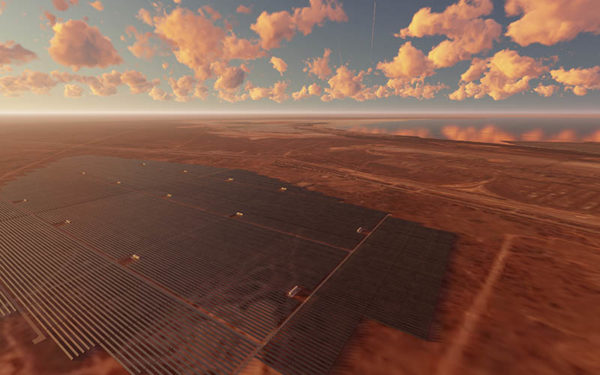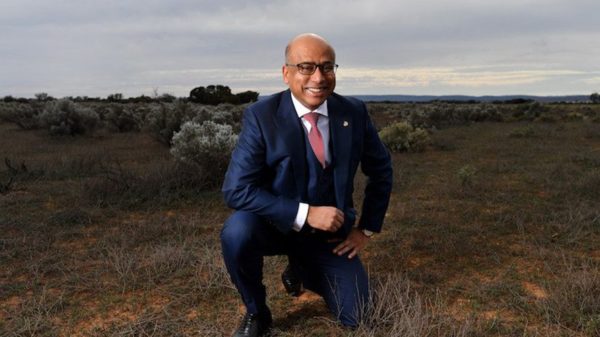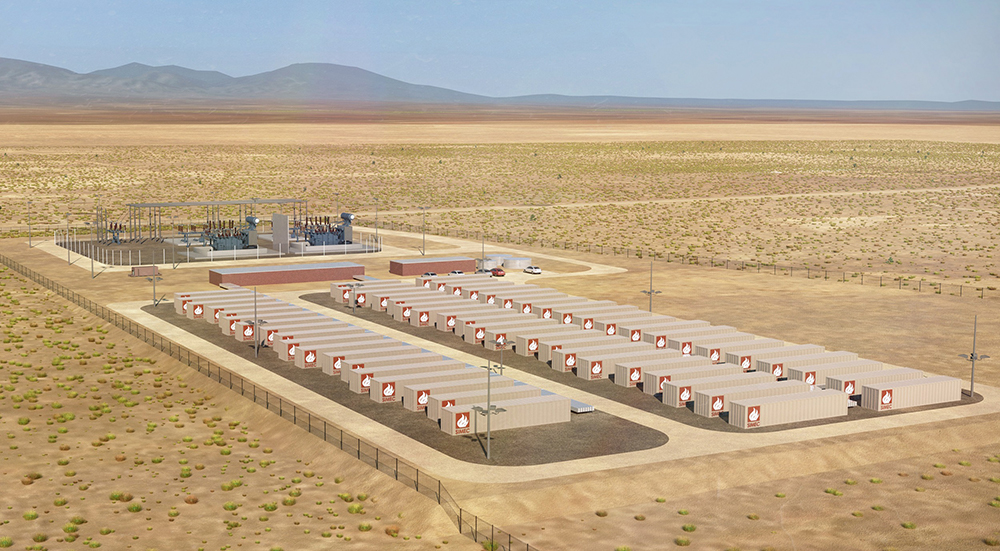The South Australian Government today secured the construction of the 280 MW Cultana Solar Farm near Whyalla, and the 100 MW Playford Utility Battery near Port Augusta, by signing a 10-year supply contract for the government’s energy needs via renewable-energy retailer ZEN Energy.
“We’re committed to building what matters, using our budget to drive jobs and growth to recover from COVID-19,” said the state’s Minister for Energy and Mining, Dan van Holst Pellekaan of the dual projects to be delivered by Simec Energy Australia, which will create some 810 new jobs during construction and require around $40 million worth of local goods and services.
Cultana Solar Farm is the first project in industrialist Sanjeev Gupta’s plan to generate 1 GW of dispatchable renewable energy in the state, and is situated just north of Whyalla Steelworks.
Simec is part of Gupta’s GFG Alliance, which plans to modernise Whyalla Steelworks, supplying it with low-cost renewable energy and making green steel a reality.

Image: Simec Energy Australia
Two steps closer to green steel
Although the steelworks will not have a direct behind-the-meter connection to either the solar farm or the battery, it “will have contracts in place that will effectively utilise the financial hedge that comes out of the solar farm”, SIMEC CEO Mark Barrington said in May this year.
The Playford Utility Battery will be the fifth “big battery” in South Australia’s growing fleet of storage capabilities, which includes Neoen’s Hornsdale Power Reserve’s now 150 MW installation (recently expanded from the original 100 MW) — the world’s largest lithium-ion storage system.
Once energised, the Playford storage system will provide Frequency Control Ancillary Services (FCAS) and Fast Frequency Response (FFR) to the National Electricity Market, and support the energy needs of ZEN Energy retail customers and the steel plant.
The Playford and Cultana projects, with a combined price tag of $660 million, have been mooted for some time, with the solar farm receiving development approval in mid May 2019, the battery, in August 2019.
“The Marshall Government’s energy policies are making these long-proposed projects a reality,” said van Holst Pellekaan, who added that the projects are “a coup for the communities of the Upper Spencer Gulf.”
Whyalla Chamber of Commerce and Industry President, Malcolm McLeod, agreed, today telling Adelaide’s The Advertiser that the renewable build is a “confidence boost at the right time” and “another step in the right direction as we work towards Greensteel in Whyalla”.
The power of ZEN
For ZEN Energy, which recently also secured 10-year power purchase agreement with the CSIRO, the deal will expand its business customer base and grow its supply to the residential retail market.
Chairman of ZEN Energy, Australian economist Ross Garnaut said in a statement, “This is a landmark contract for ZEN Energy’s business … and reinforces the ability for renewable energy to supply customers with clean affordable energy solutions.”
Van Holst Pellekaan asserts that the new assets will provide competition in the market and save South Australian households an extra “$10 on average on their electricity bills, on top of the $158 average reduction” that he says has already been delivered during the two years in which current Liberal government has been in power.
Work on Cultana Solar Farm is expected to begin in the first half of 2021, with construction of the battery to follow.
Development of the 1,100-hectare solar farm on the Eyre Peninsula was given the go-ahead on condition that Simec reduce the impact it may have on native vegetation.
Good groundwork boosts solar production and the environment
It will benefit from a technique first proposed to the company by Glenn Christie of Succession Ecology, which involves rolling the site rather than grading and removing all plants. Rolling flattens native “bonsai forest” as Christie has dubbed the native scrub which provides habitat for small native animals, allowing plenty of time to install ground-mounted solar panels before springing up again.
Such native vegetation helps suppress dust, thereby reducing the need for cleaning of solar panels, and lowers the temperatures around the panels, which helps increase their performance and output.

Image: Simec Energy Australia
The 10-year contract between the South Australian Government and ZEN Energy is also forecast to save the state $12.8 million in electricity costs, compared to its existing power arrangements, which benefits the state’s taxpayers.
The Climate Council of Australia has given its stamp of approval to the new green deal: its energy expert Andrew Stock said today, “Policies like these will pay long-term dividends and set South Australia up for the future by creating jobs, bolstering the economy and tackling climate change simultaneously.”
This content is protected by copyright and may not be reused. If you want to cooperate with us and would like to reuse some of our content, please contact: editors@pv-magazine.com.









3 comments
By submitting this form you agree to pv magazine using your data for the purposes of publishing your comment.
Your personal data will only be disclosed or otherwise transmitted to third parties for the purposes of spam filtering or if this is necessary for technical maintenance of the website. Any other transfer to third parties will not take place unless this is justified on the basis of applicable data protection regulations or if pv magazine is legally obliged to do so.
You may revoke this consent at any time with effect for the future, in which case your personal data will be deleted immediately. Otherwise, your data will be deleted if pv magazine has processed your request or the purpose of data storage is fulfilled.
Further information on data privacy can be found in our Data Protection Policy.